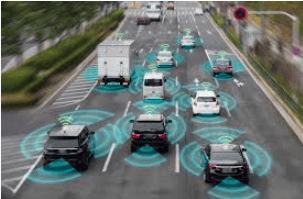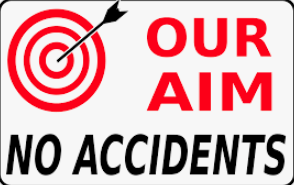Here's how it's done



The main causes of accidents, minor or fatal, as well as traffic congestions and slowdowns are considered to be:
A- Unsafe lane changing.
B- Last minute frantic lane changing at interchanges.
C- Highway Swerving.
D- Not being aware of:
d1- Oncoming traffic from behind in the adjacent lanes.
d2- The presence of vehicles in the blind spots.
d3- Being on a crash course with out-of-sight vehicles.
E- Trying to make it through an intersection before the light has turned red.
F- Misjudging speed and distance when overtaking, resulting in head-on Collisions.
G- Not maintaining a safe distance and tailgating, resulting in rear-end Collisions.
All of these dangerous, accident causing behaviors can be easily controlled by conveying timely alerts and warnings to motorists, audio visually by the ADAS systems.
This is achieved and manifested by deploying “Advanced Driver Assistance Systems” (ADAS) on vehicles, as well as “Roadside Units” (RSU) installed permanently or temporarily on traffic light controllers at intersections, and other infrastructure, like pedestrian crossings, railroad crossings, road diversions, roadworks and accident sites amongst several other locations and situations, even at known animal crossing paths, popular jay-walking spots like near prayer halls and business districts, all to alert and warn the motorists of unforeseen circumstances using fixed and portable RSU’s and with the help of special sensors.


All of these ADAS devices communicate with each other by the way of “Basic Safety Messages”, (BSM) to warn and alert the motorists of:
1- The presence of other vehicles in the blind spots, when attempting to change lanes.
2- The presence of oncoming vehicles when backing out of a parking space.
3- When being on a crash course with other in-sight or out-of-sight vehicles such as:
3a- Vehicles traveling ahead, to avoid rear end collisions.
3b- Other vehicles attempting to merge into the same lane, when changing lanes.
3c- Other out-of-sight vehicles approaching from around bends, corners and side-streets.
3d- Vehicles approaching from the opposite direction, when overtaking.
ADAS devices, besides communicating with each other and with the RSU’s, they also communicate with the cloud servers to obtain data with regards to:
1- Potential road hazards such as:
a- Slippery roads, unfavorable weather conditions such as high winds, rain, fog, poor visibility, storms, floods, lightning, earthquakes and other natural disasters.
b- Traffic congestions and hurdles.
c- Lack of accidents.
d- Oil and hazardous material spillage.
e- Roadworks and diversions.
f- Inoperative traffic control lights.
g- Most optimized routing based on precise real time traffic data obtained from millions of ADAS and RSU units around the country, and data obtained and analyzed from real-time satellite imagery showing traffic hurdles, road diversions, roadworks, natural disasters, poor visibility and unfavorable weather conditions, etc.
h- Escaped zoo animals.
i- Criminals on the run.
ADAS systems, in addition to their communications capabilities with the outside world, have map and GIS data embedded to yield:
1- Turn by turn navigational instructions.
2- With their high precision location accuracy, the ADAS determines which lane the vehicle is in, and which lane to switch to, in order to end up on the correct path based on the selected itinerary and the road geography , prior to approaching interchanges, crossroads, on-ramps and exits, and so on, with messages like:
“Move over one lane to the right as soon as it is safe to do so”.
“Move over two lanes to the left as soon as it is safe to do so”.
“Prepare to merge to the left lane as soon as it is safe to do so”.
3- Based on the navigational map data, all local traffic rules are known to the system and so guidance is given, audio visually, such as:
“You are traveling on a no entry road”.
“This is a two way street. You are on the wrong side of the road”.
4- Based on the signals received from other ADAS’s and the RSU’s, computations are made and thereby conclusions are drawn as to what messages to announce and display such as:
a-“You will not be able to get through this traffic light this time around”.
“So relax and prepare to stop”.
OR
“You will get through this traffic light if you maintain your current speed”.
“So relax and continue with caution”.
b-“Do not overtake now. It is highly unsafe”.
c-“You are exceeding the current road speed limit by over 20km/hr”.
d-“It is not allowed to drive on the shoulder”.
e-“It is not allowed to turn here”.
f-“This is a railroad crossing. Stopping is forbidden here”.
g- “This lane is for busses only”.
The system optimizes and prioritizes traffic through controlled intersections in the most efficient manner.
Since the Roadside Units (RSU’s), installed at all controlled intersections, are fully aware of the vehicle-count in each phase of the intersections, as well as being aware of the traffic flow at all other relevant roads and intersections around the city, nationwide, the complexity of the equation is mitigated and intelligent prioritizing of the signal status is thus made possible, to ease the flow of traffic through the roads throughout the country, and minimize the waiting times at the intersections, thereby reducing time and fuel wastage, engine depreciation, while minimizing carbon emissions into the air that pollute the environment.
This can be achieved by taking advantage of “Adaptive Signal Control Technology,
( ASCT )”, as explained in the above video.
Also, by the virtue of this, emergency vehicle and public transport signal preemption is easily achieved, since the RSU’s recognize them as they approach, allowing for their safe and smooth passage through the intersections.
